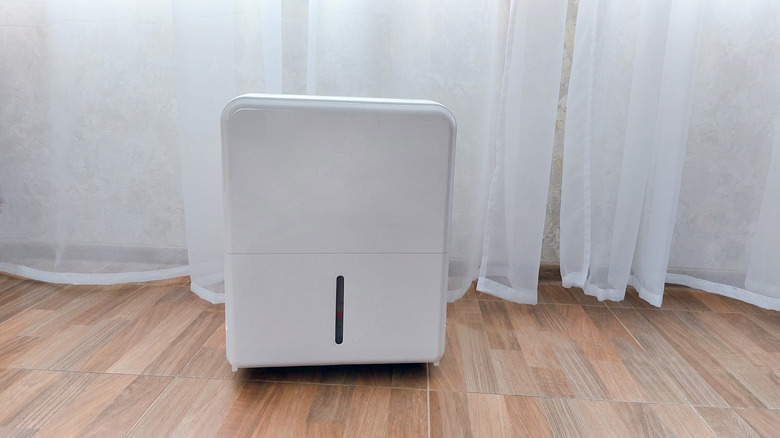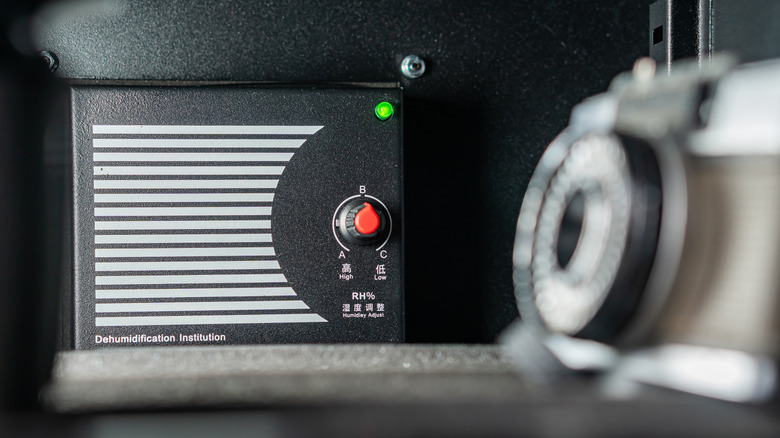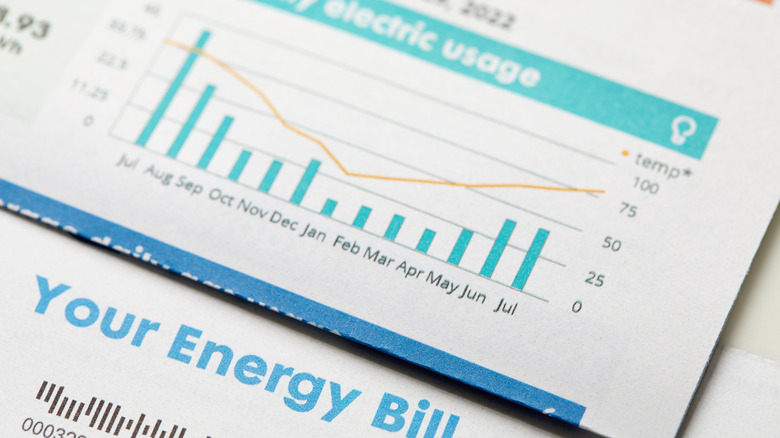The Potential Downsides To Using A Dehumidifier That No One Thinks Of
Dehumidifiers are praised as the ultimate solution for dealing with excessive moisture. Got a musty basement? Run a dehumidifier in your house. Fighting mold or damp walls? It is a hero in disguise. But let's not pretend these devices are perfect. Behind their reputation for creating a comfortable and healthy indoor environment are some sneaky downsides that don't get enough attention. First, they can be noisy. Worse, they can overdo their job and leave your air too dry. And let's not ignore the spike in your energy bill when they run around the clock. These issues don't mean dehumidifiers are bad, but they're worth knowing before you plug one in.
Dehumidifiers are not known for their subtlety, with noise levels ranging from 20 to 50 decibels. Depending on the model, your dehumidifier may produce a steady hum, an occasional buzz, or even a mechanical groan that makes you wonder if it's alive. Newer models boast "quiet" technology, but let's be honest —"quiet" is subjective. You might learn to tune it out after a while, but it's a steep learning curve for which not everyone has the patience — or the ear— for.
The noise isn't limited to one room, either. Dehumidifiers are meant to pull moisture from the air, which means the best spot to put your dehumidifier is in a central location. A common mistake to avoid when dehumidifying your home is placing it in a corner or next to a wall. Translation: wherever you put it, you're going to hear it. So, unless you enjoy constant background noise, you might want to think twice before hitting that "Buy Now" button.
Too much of a good thing – overly dry air
Yes, dehumidifiers are supposed to reduce excess moisture, but sometimes they get a little overzealous. If the humidity level is set too low, it can leave you with itchy skin, dry eyes, or a scratchy throat. And while you can always slather on lotion or keep a glass of water nearby, it's hardly a long-term solution. It's not just your skin that suffers. Many plants rely on a certain humidity level to thrive, and when the air becomes too dry, they'll start to droop, wilt, or even develop brown edges on their leaves. And let's not forget your wooden furniture or floors. Too little humidity can cause wood to shrink, crack, or warp, leading to expensive repairs or replacements. Pets can also feel the effects, especially those with sensitive skin or respiratory issues. Dry air can exacerbate their discomfort.
Keeping your home at the perfect humidity level is harder than it seems. Dehumidifiers have settings to help you adjust, but these aren't always precise. It's a bit of a guessing game, and unless you're constantly monitoring your indoor humidity levels, you might find yourself in a never-ending cycle of adjustments. Too humid, and you're back to square one. Too dry, and you're dealing with chapped lips and dying plants. Achieving that balance requires time, effort, and sometimes even additional gadgets like humidifiers. Yes, you read that right — you might need a whole-house humidifier to counteract your dehumidifier's overzealousness. Irony, the name is home appliances.
Energy bills that make you sweat
If the noise and dry air haven't scared you off yet, let's talk money. Dehumidifiers are great at their job, but they are also energy hogs. Running one for hours or even days on end can noticeably impact your electricity bill. Energy-efficient models exist, but even the most efficient ones still need a fair amount of power. Over time, this can add up, especially if you live in a humid area where a dehumidifier is practically a permanent fixture.
In addition to higher energy bills, dehumidifiers come with hidden maintenance costs that no one talks about. Most models have filters that need to be cleaned or replaced regularly, and if you forget to empty the water tank, you could end up with a messy overflow situation.
When it comes to energy costs, it's not just about the immediate hit to your wallet — there's also the broader environmental impact to consider. Dehumidifiers, especially older or less energy-efficient models, contribute to your home's overall energy consumption, which increases your carbon footprint. This added energy drain might feel like a step backward if you're trying to live a greener lifestyle. Plus, running the dehumidifier constantly means more wear and tear on your home's electrical system, which could lead to repair costs down the line. Energy-efficient models can help mitigate some of these issues but often come with a higher upfront price tag.


